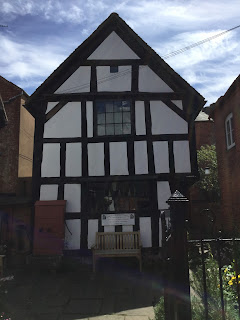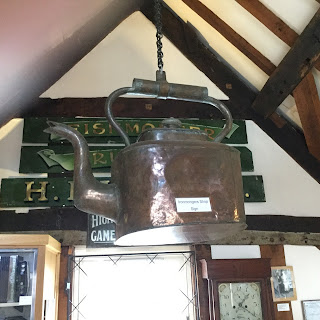The title is a quote from L P
Hartley’s ‘The Go-Between’ and places like Ledbury (Monmouth for that matter)
are rich in glimpses and hints. Last week's post showed some of its wonderful
buildings and streets. This post focuses on its equally wonderful interiors. Below is the interior of St Michaels and All Saints. It's worth focusing on the altar picture and stained glass. The church is huge and illustrates the wealth of the medieval town.
The pictures sent a shiver of
recognition running through me. As a six year old boy I sat at such a desk,
inkwell and a dribbly nibbed pen to hand. A watchful nun prowled to
ensure we didn't make too many blotches and blobs. Copperplate stood little
chance in our crabbed hands, and fortunately the practice was discontinued a few years later. God does
listen to our prayers.
The instructions (for schools without nuns and small sticks)
The results
Below are blackboard 'sums' I
dimly remember. Just to illustrate the continuity of past and present, school
exercise books in the 1950's and 1960's still had arithmetic tables and
imperial measures on their back page. In theory we'd have had no problem with
these Victorian 'sums'. I confess though, I never did figure out what a rood
was, though it sounded good on the tongue.
A smoking chimney
The smoking chimney extended the
entire width of the house. Meat was hung in layers stretching from top to
bottom, depending on the cuts of meat and their stages of curing. The fire was
fuelled by Hawthorne and applewood for flavouring
A section of wall timber. Bear in mind its solidity and weight
And its construction!
House frames were constructed of
local oak. The frames were cut in the carpenter’s shop, then each individual
part were numbered (Roman numerals just to make things difficult) so they
could be matched up on site. When this was done, the frame was dismantled, transported and reassembled using
the marks to match up the parts correctly. The parts were then secured by
wooden pegs and the walls raised. In the exhibit they have what looks like a 'toy,' but one that's highly instructive. Each of these beams are linked to stress points that support each other in sequence. Try and assemble them in the wrong order and the whole thing collapses.
Imagine playing the same game with beams the size of small trees. As the title of this post reminds us. 'They do things differently there, and whether it's copperplate, measuring in bushels and ells or smoking meat in huge chimneys it behoves us to have some humility.
--> -->


















